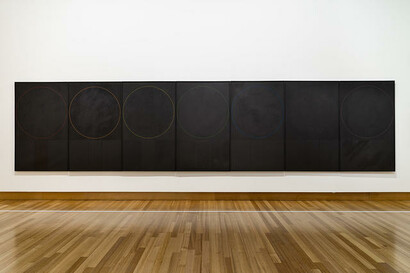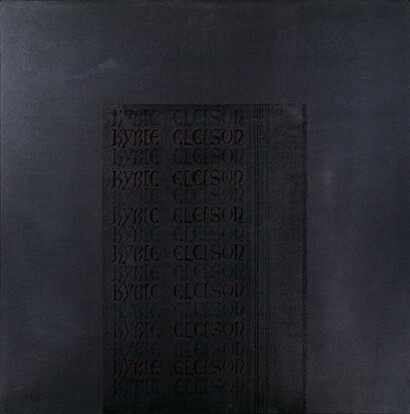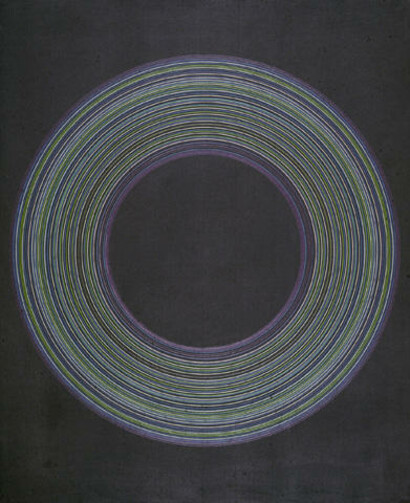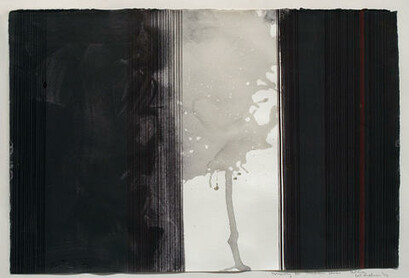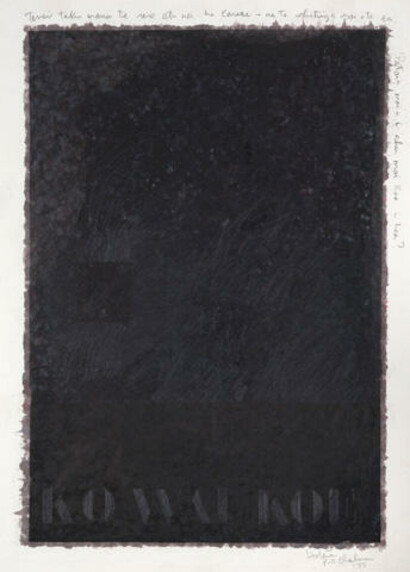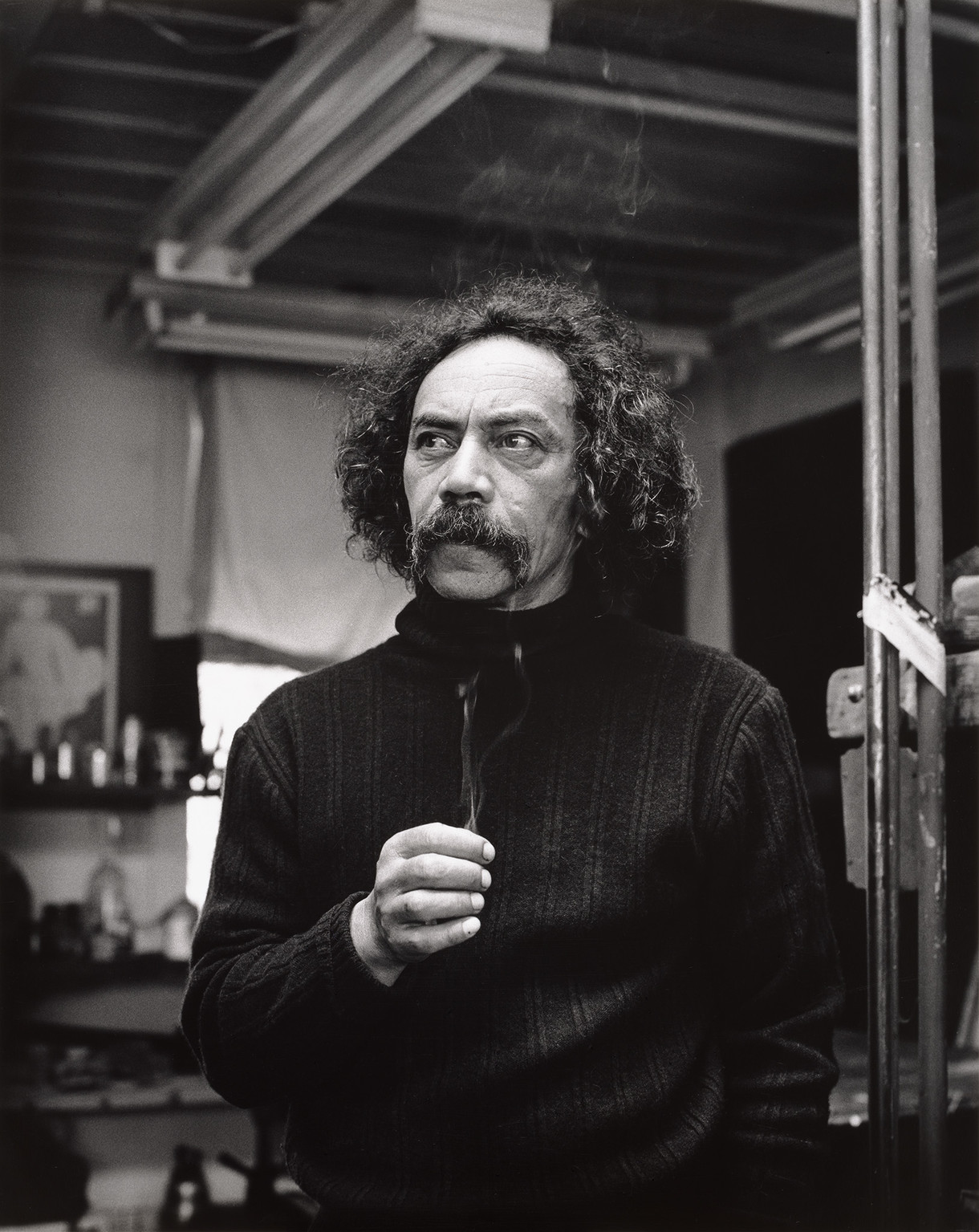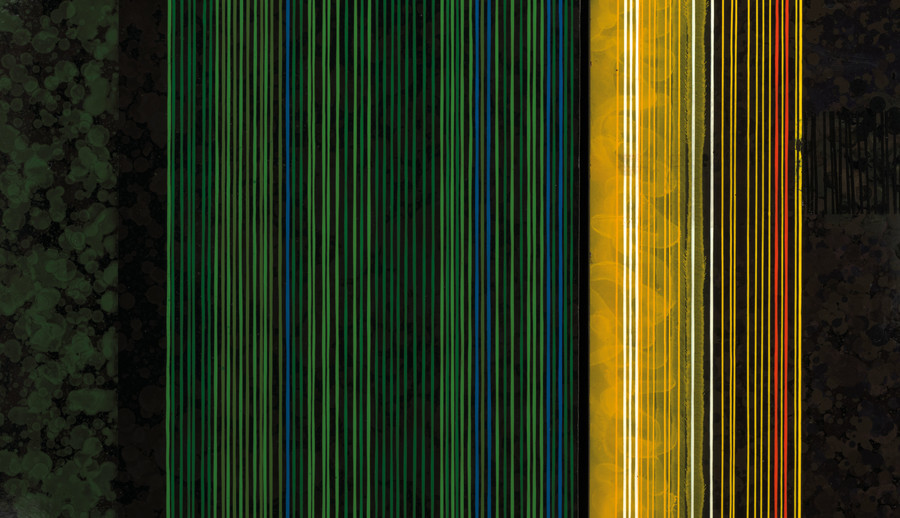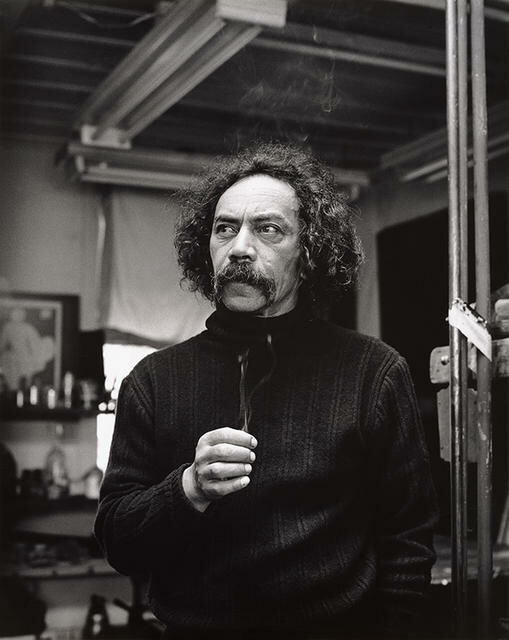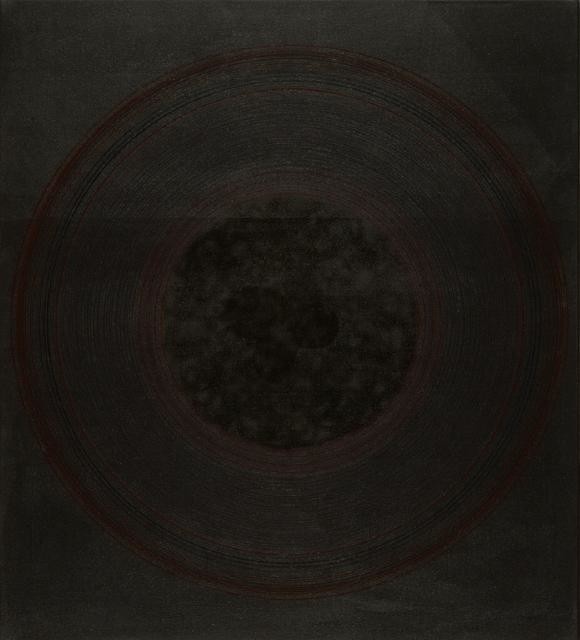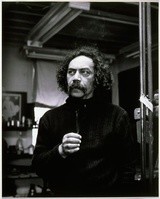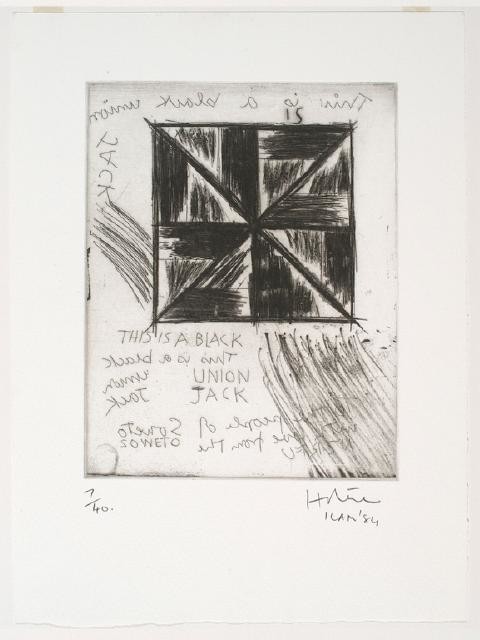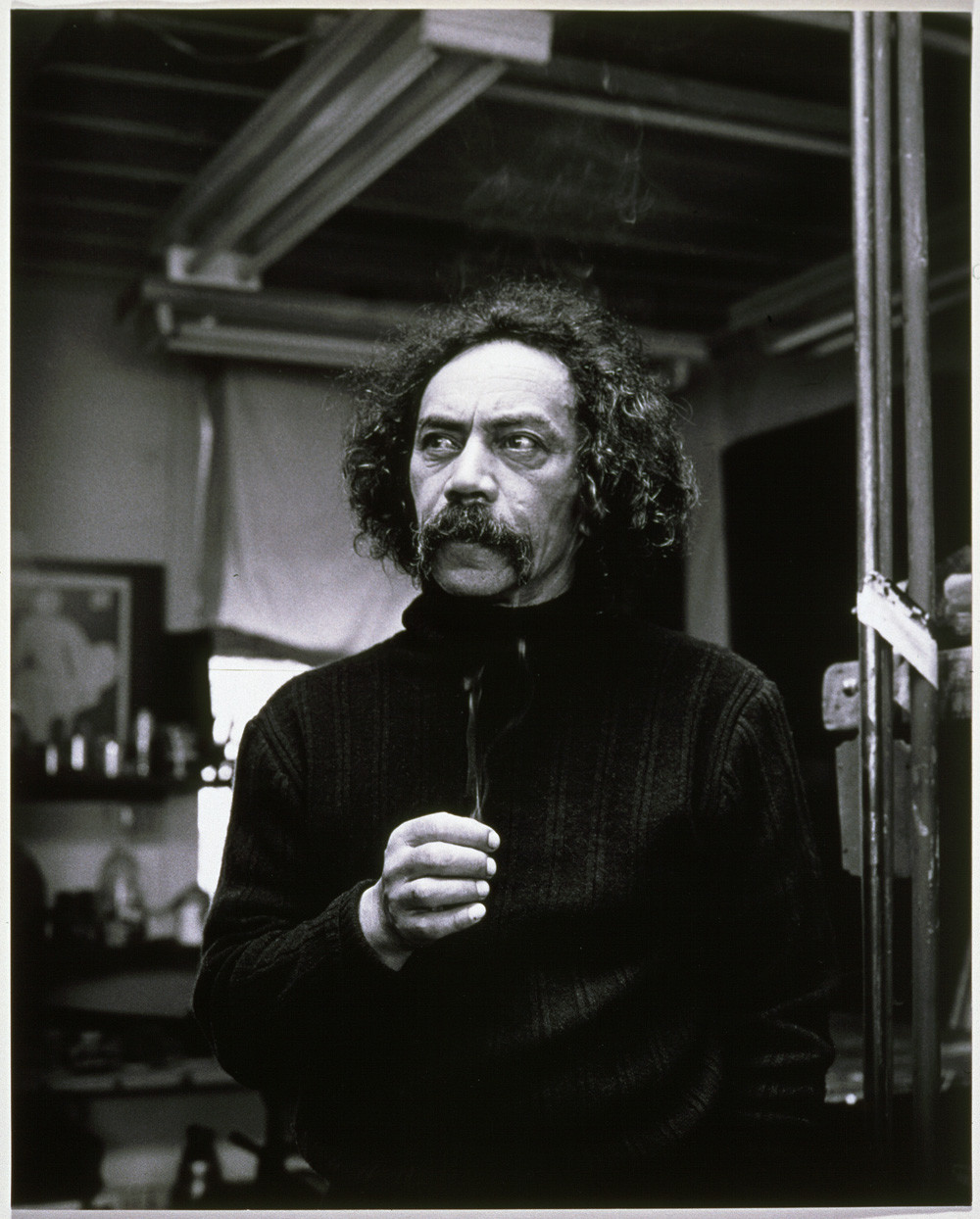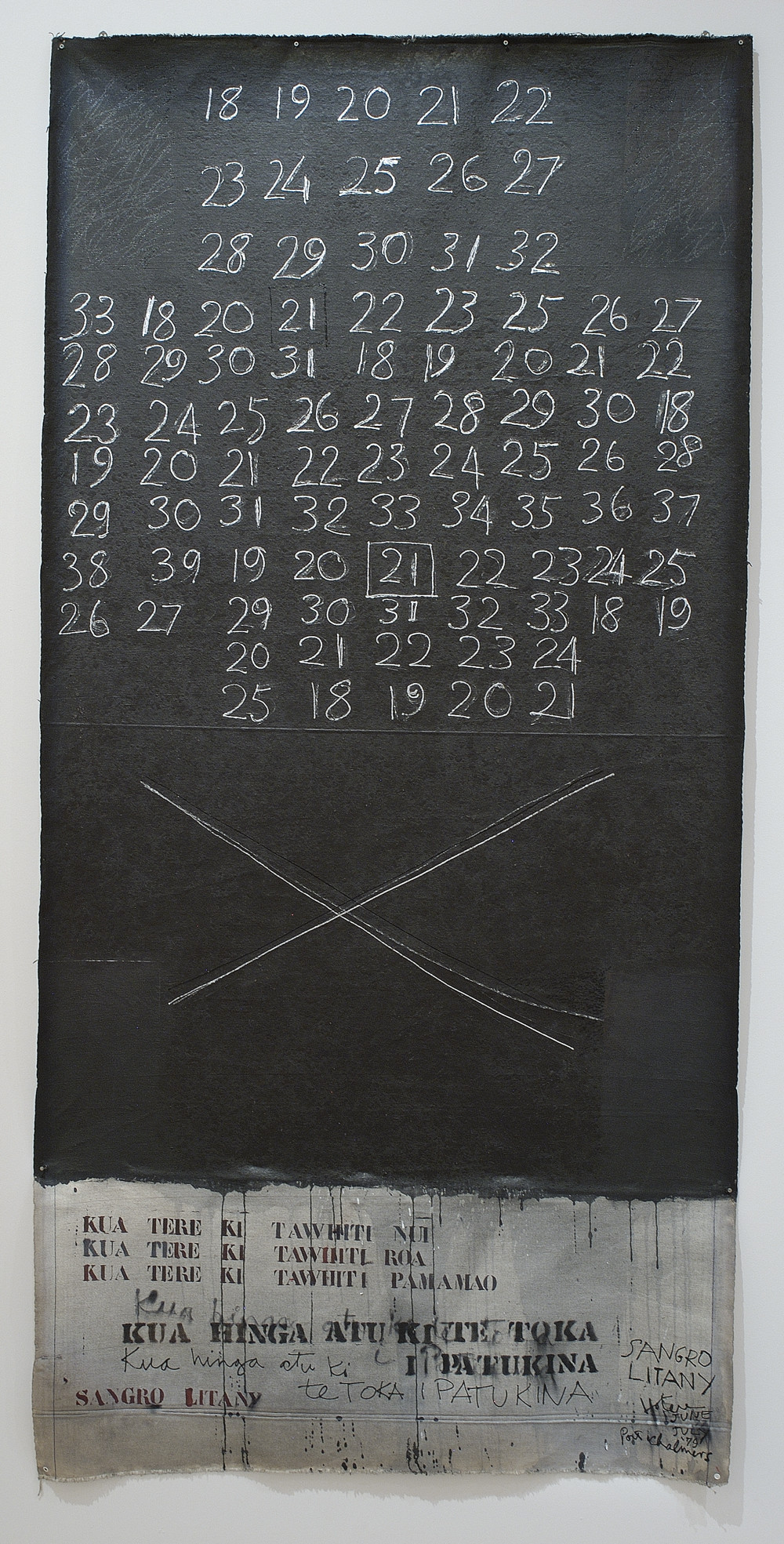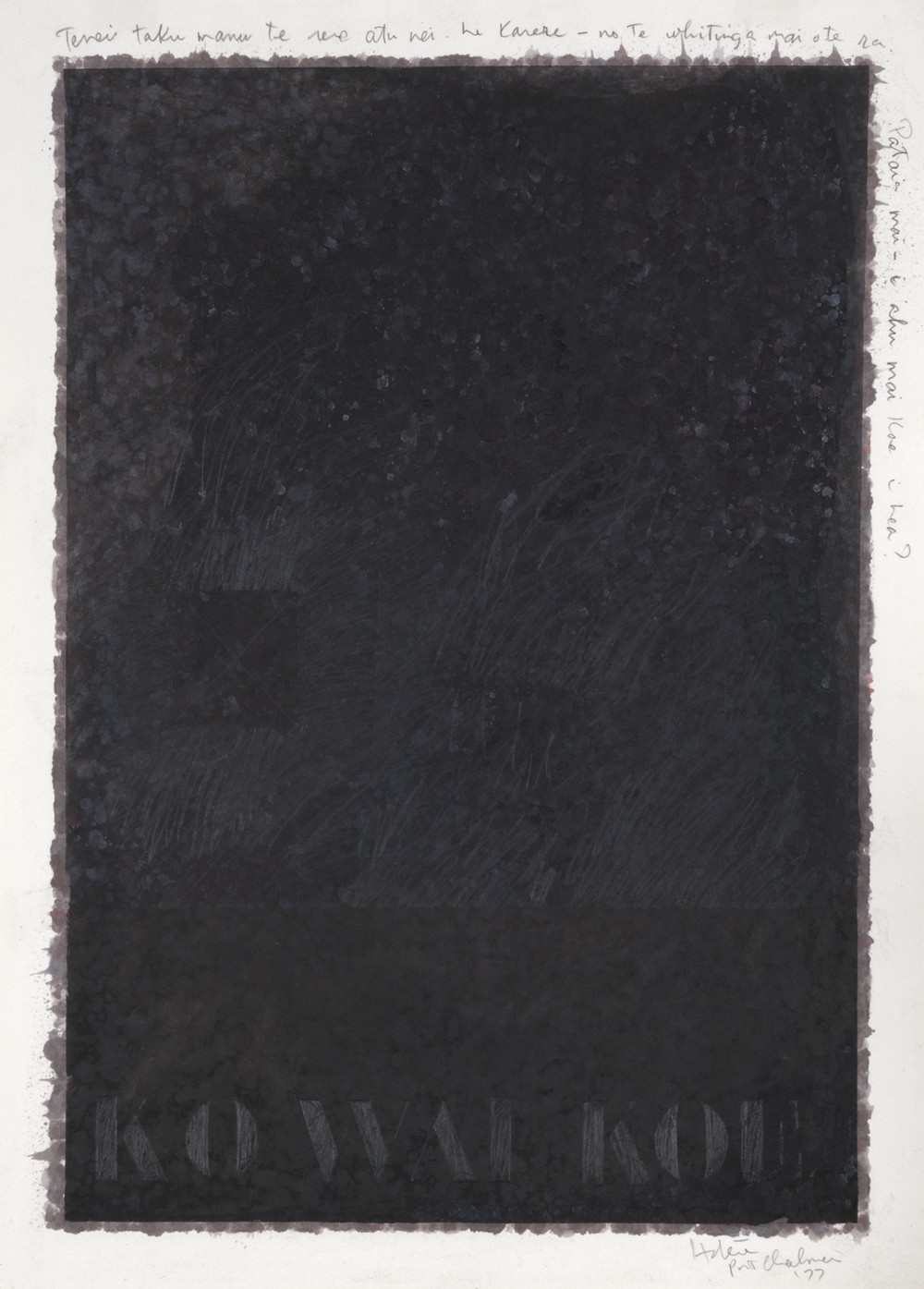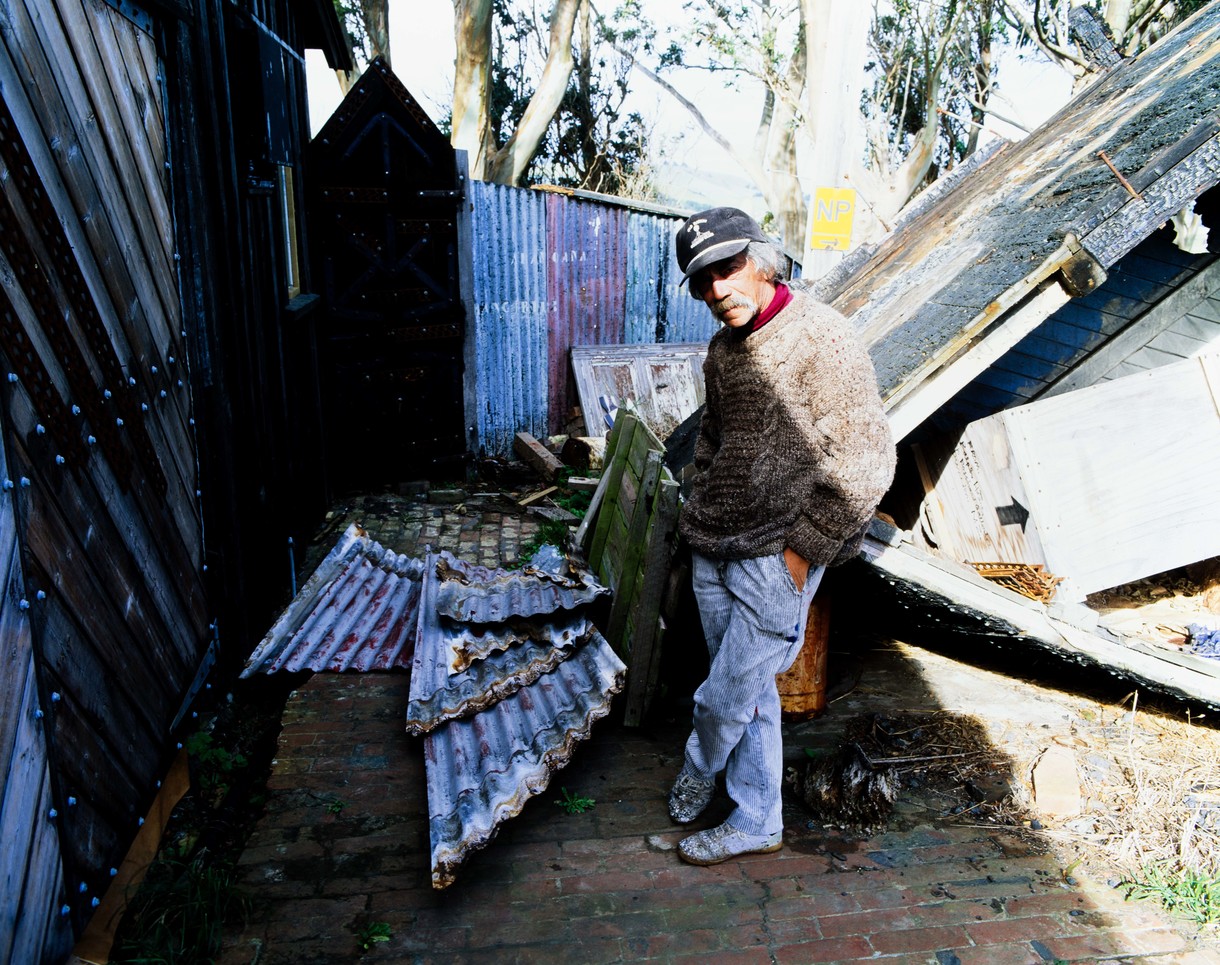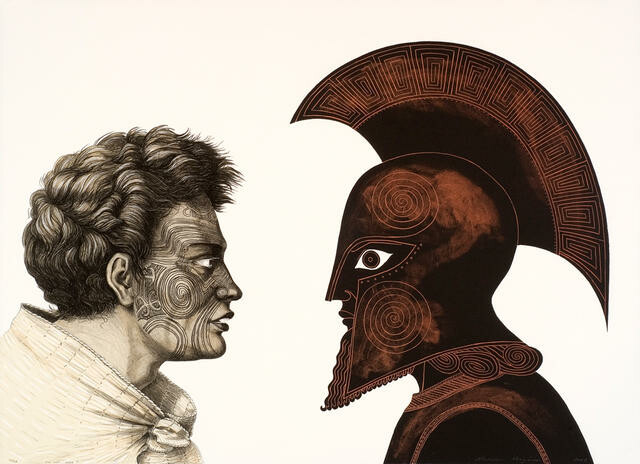This exhibition is now closed
Hotere
18 December 2015 –
19 June 2016
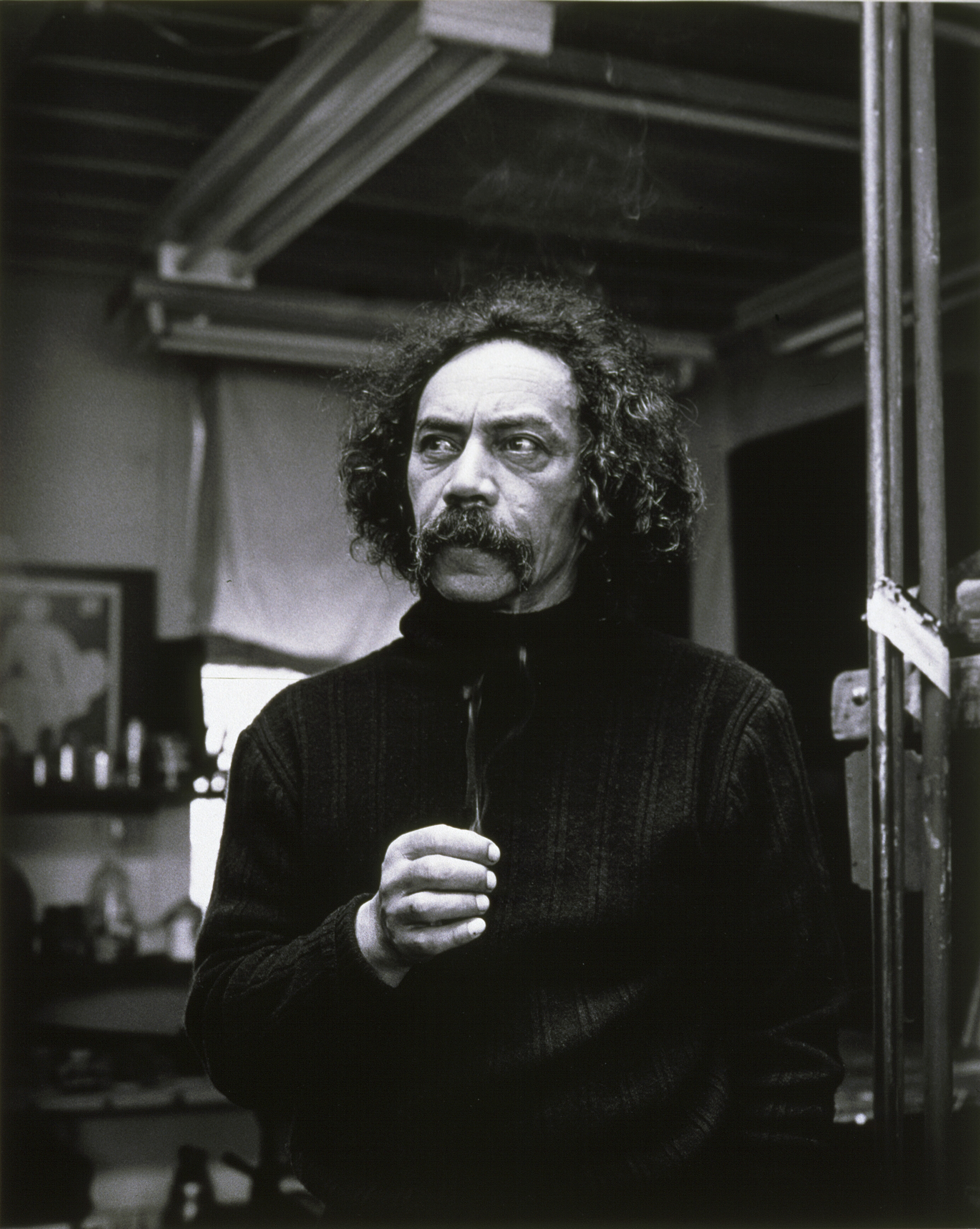
Marti Friedlander Ralph Hotere - The Artist's Studio, Port Chalmers 1979. Photograph. Collection of Christchurch Art Gallery Te Puna o Waiwhetū 1998
The Gallery marks the passing of Ralph Hotere with paintings selected from the collection.
Ralph Hotere was always one to take on the establishment. One of his last works was in response to the Canterbury earthquakes, made for a close Christchurch friend who was battling the forced sale of his property to the government. When Hotere died on 24 February 2013 the nation lost a major artist. Reflect on some of his finest work, including his monumental Malady Panels and the sombre Sangro Litany.
Exhibition number: 993
